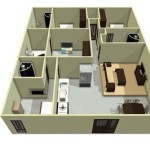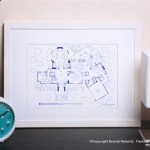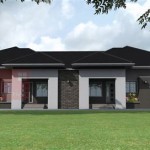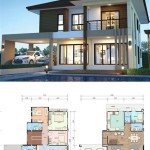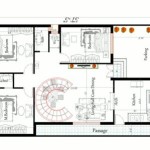Example of Floor Plans With Measurements in Meters and Feet
Floor plans serve as fundamental blueprints for any building project, providing a scaled diagram of a room or building viewed from above. These plans are essential for architects, builders, interior designers, and homeowners alike. They communicate spatial relationships, room sizes, and the placement of walls, doors, windows, and fixtures. A critical component of any floor plan is accurate and clearly labeled measurements. These measurements are typically provided in both metric (meters) and imperial (feet) units to cater to different preferences and regulatory requirements. The following details examples of floor plans with measurements in both meters and feet, illustrating the importance of clarity and precision in spatial representation.
The use of both metric and imperial units allows professionals to work seamlessly, regardless of their preferred system. Architects may design using metric units for their precision, while contractors might use feet and inches for on-site construction due to familiarity and available tools. A well-prepared floor plan accommodates both needs, minimizing errors and improving communication throughout the project lifecycle.
Key Components of a Floor Plan
Before examining specific examples, it's useful to define the key elements typically included in a detailed floor plan:
*
External Walls:
These define the outer boundaries of the building and are typically the thickest lines on the plan.*
Internal Walls:
These divide the interior space into rooms and are usually thinner than external walls.*
Doors:
Represented as an arc showing the direction of door swing and the door opening size.*
Windows:
Shown as gaps in the walls, indicating the window width and, sometimes, sill height.*
Fixtures:
Includes items like sinks, toilets, bathtubs, showers, kitchen appliances (refrigerators, ovens, dishwashers), and sometimes furniture.*
Stairs:
Depicted with arrows indicating the direction of ascent and the number of steps.*
Dimensions:
Numerical values indicating lengths, widths, and heights. These are crucial for accurate construction and space planning.*
Room Labels:
Designations for each room, such as "Living Room," "Bedroom," "Kitchen," etc.*
Scale:
A ratio indicating the relationship between the drawing size and the actual size of the building (e.g., 1:100 or 1/4" = 1'0").The clarity and accuracy of each of these components contribute to the overall usability of the floor plan.
Example 1: A Simple One-Bedroom Apartment Floor Plan
Consider a basic one-bedroom apartment. The overall dimensions might be 8 meters by 6 meters (approximately 26.2 feet by 19.7 feet). This apartment includes a living room/kitchen area, a bedroom, and a bathroom.
The living room/kitchen area is the largest space, measuring 4 meters by 6 meters (13.1 feet by 19.7 feet). The measurements displayed will appear as “4.0 m / 13.1 ft” along the width and “6.0 m / 19.7 ft” along the length. Within this space, the kitchen area might be defined by a counter running 2 meters (6.6 feet) along one wall. The floor plan will show this counter with the dimension labeled explicitly.
The bedroom is located adjacent to the living area and measures 3 meters by 4 meters (9.8 feet by 13.1 feet). Similar to the living room, the floor plan would indicate “3.0 m / 9.8 ft” and “4.0 m / 13.1 ft” along the respective walls. The door to the bedroom is represented with an arc, and its opening size is typically around 0.8 meters (2.6 feet). The plan might also indicate the placement of a bed and wardrobe, though these are not always included and depend on the purpose of the floor plan.
The bathroom, the smallest space, measures 2 meters by 2 meters (6.6 feet by 6.6 feet). Crucially, the plan shows the placement of the toilet, sink, and shower or bathtub, each drawn to scale. The dimensions of these fixtures might also be included for precise planning. For example, the shower stall could be shown as 0.9 meters by 0.9 meters (3.0 feet by 3.0 feet). The door opening to the bathroom will also be indicated.
The external walls of the apartment are drawn with a thicker line weight to distinguish them from the internal walls. Windows are shown as gaps in the external walls, with their width indicated; for example, a window in the living room might be 1.5 meters (4.9 feet) wide.
All dimensions are clearly labeled with arrows pointing to the specific wall or feature being measured. The location of the entry door to the apartment is clearly indicated, and the overall scale of the drawing is stated, for instance, 1:50.
Example 2: Two-Story House Floor Plan
For a more complex structure, consider a two-story house. The ground floor might be 12 meters by 10 meters (39.4 feet by 32.8 feet), while the first floor might have a slightly different configuration due to overhangs or changes in the building's footprint. Each floor will have its own separate floor plan.
On the ground floor, the floor plan could show a living room, dining room, kitchen, study, and a half-bathroom (powder room). The living room, at 6 meters by 5 meters (19.7 feet by 16.4 feet), is a large open space. The floor plan details the location of any fireplaces, built-in shelving, or large windows.
The dining room, adjacent to the living room, might be 4 meters by 4 meters (13.1 feet by 13.1 feet). This space includes the location of a dining table and any other relevant furniture. The kitchen, connected to the dining room, could be an L-shaped space measuring 5 meters by 3 meters (16.4 feet by 9.8 feet) on one side and 3 meters by 2 meters (9.8 feet by 6.6 feet) on the other. The plan accurately shows the placement of all kitchen appliances, cabinets, and countertops, with corresponding dimensions. For instance, the length of the countertop might be labeled as 3.5 meters (11.5 feet).
The study, a smaller room at 3 meters by 3 meters (9.8 feet by 9.8 feet), provides a quiet workspace. The half-bathroom, measuring approximately 1.5 meters by 1 meter (4.9 feet by 3.3 feet), includes the placement of the toilet and sink.
The plan also shows the location of the staircase leading to the first floor, indicating the direction of ascent with an arrow. The overall width of the staircase is specified, typically around 1 meter (3.3 feet).
On the first floor, the plan might include three bedrooms and two bathrooms. The master bedroom, the largest at 5 meters by 4 meters (16.4 feet by 13.1 feet), often includes a walk-in closet and an ensuite bathroom. The plan shows the dimensions of the walk-in closet and the layout of the ensuite bathroom, including the placement of the shower, bathtub, toilet, and sink.
The other two bedrooms might be 4 meters by 3 meters (13.1 feet by 9.8 feet) each. They would be labeled with their respective dimensions and the placement of windows and doors. The second bathroom, shared by these two bedrooms, includes similar details as the ensuite bathroom.
The floor plan for the first floor would also show the location of any linen closets or other storage spaces. The overall scale of the drawing and the unit conversions (meters and feet) are clearly stated on each floor plan.
Importance of Accurate Measurements and Unit Conversions
The accuracy of measurements is paramount in floor plans. Errors in dimensions can lead to significant problems during construction, including misaligned walls, incorrectly sized rooms, and improperly fitted fixtures. Consistent and clear unit conversions (meters and feet) are equally crucial to avoid misunderstandings between different professionals involved in the project.
For example, if a floor plan indicates a wall length of 5 meters but the contractor mistakenly interprets it as 5 feet, the resulting wall will be significantly shorter than intended, leading to costly rework. Similarly, incorrect placement of fixtures due to inaccurate dimensions can result in plumbing and electrical complications.
Modern CAD (Computer-Aided Design) software tools greatly assist in creating accurate floor plans and automatically converting between metric and imperial units. These tools allow architects and designers to input measurements in one unit system and have them automatically displayed in the other. They also provide features for double-checking dimensions and ensuring consistency throughout the plan.
Beyond the technical aspects, clear communication is vital. All dimensions should be clearly labeled, and the unit system being used should be prominently displayed. It is also helpful to include a legend explaining any symbols or abbreviations used in the floor plan. Regular reviews and checks of the floor plan by all stakeholders can help identify and correct any errors before construction begins, ultimately saving time and resources.
In summary, a well-prepared floor plan with accurate measurements in both metric and imperial units is an essential tool for successful building projects. It facilitates clear communication, minimizes errors, and ensures that the final constructed space meets the intended design and functionality.

12 Examples Of Floor Plans With Dimensions

Floor Plans With Dimensions Including Examples Cedreo

Floor Plan With Measurements

Floor Plans With Dimensions Including Examples Cedreo
Overview Measurements On Floor Plans Roomsketcher Help Center

Floor Plans With Dimensions Including Examples Cedreo
Overview Measurements On Floor Plans Roomsketcher Help Center

How To Properly Read Floor Plans And What Details Look For

The Ground Floor Of House Layout And Dimensions In Cm Scientific Diagram

12 Examples Of Floor Plans With Dimensions

